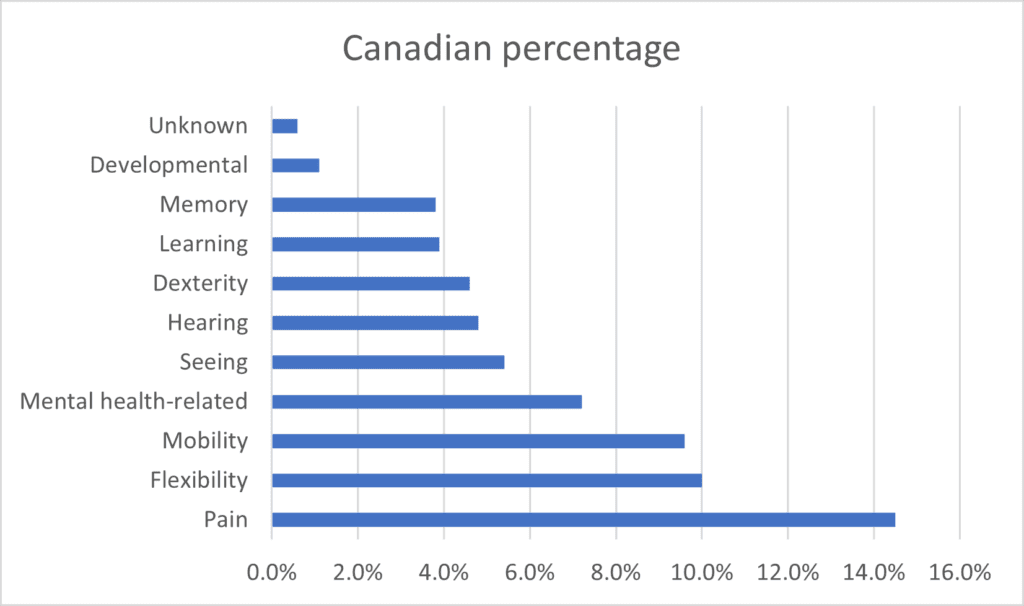Our Communities
Statistics Canada surveyed over 50,000 Canadians in 2017 for the Canadian Survey on Disability found that there are 6.2 million (22.3%) Canadians aged 15 and older who have a disability where disability is defined as “youth and adults whose everyday activities are limited due to a long-term condition or health-related problem” (2017). This survey was based on answers in the 2016 census and resulted in some limitations as it targeted people living in private dwellings and excluded people living in collective housing or on First Nations reserves. We look forward to future surveys that can help us understand areas of improvement.
Extrapolating from this, the ORL service population aged 15 years and older is approximately 82,000 adults living with a disability that affect their daily life in the ORL service area. Statistics Canada estimates that approximately 4% of kids are living with a disability. For the ORL, this means we can estimate that 2,300 kids are living with a disability in the ORL service area.
There are many types of disability – the most prominent ones are: pain (14.5%), flexibility (10%), mobility (9.6%), mental health-related (7.2%), and seeing (5.4%).
The estimated population for these different disabilities are
- Unknown: 2,205
- Developmental: 4,042
- Memory: 13,963
- Learning: 14,331
- Dexterity: 16,903
- Hearing: 17,638
- Seeing: 19,843
- Mental Health-related: 26,457
- Mobility: 35,276
- Flexibility: 36,746
- Pain: 53,282
We also know that as people age, their disability rates increase. The rate of disability with seniors is much higher than in children. In Canada 43.4% of seniors aged 65+ have a disability, compared with 3.7% of children (aged 14 and under) [1]. Statistics Canada is currently running a survey specifically looking at early-learning and childcare for children with disabilities and the ORL looks forward to learning more from the results of this survey.

